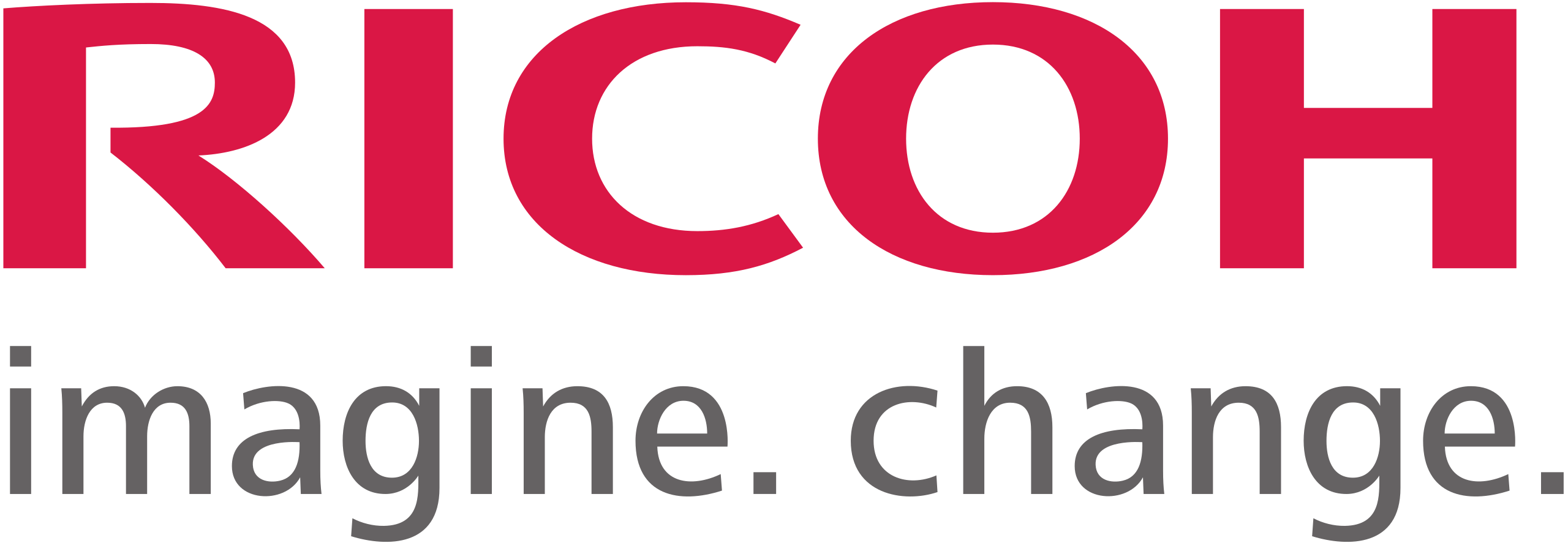6 min read
Why risk management in healthcare organizations is vital
By:
Kali Mogg
on
October 3, 2017
Updated: August 8, 2024

Risk management and risk mitigation are imperative to running any business. Specifically in the healthcare industry, risk management can prevent costly and life-endangering consequences. When healthcare organizations have risk management systems in place, you reduce patient health risks, as well as the threats to patients, staff, and administrators.
Take the following scenario: a wet floor sign is put up to prevent people from falling. This represents a lowered liability risk because the facility did their due diligence by informing the public that a situation was dangerous. In healthcare, risk management is important because a healthcare organization’s risk is astronomical.
Whether that be financial risk, legal risk, or risking the wellbeing of the patient, risk management in healthcare is extremely vital to the ongoing operations of healthcare facilities. Though a healthcare organization has an increased reliability on digital processes, that doesn’t mitigate the potential for human error. With risk management, especially when it comes to healthcare’s digital operations, your healthcare business lessens the impact from both slip and falls and costly litigation. A managed services provider, specifically one experienced in healthcare and risk management, is capable of analyzing predictable risk to prevent costly consequences.
Every business knows a thing or two about risk management, but when it comes to healthcare, the stakes are considerably higher. The kind of sensitive information handled by the healthcare industry on a daily basis must be protected–and that means compliance with specialized regulations. This can be a lot to handle. Luckily, risk management when it comes to compliance is as simple as the click of a few buttons.
Where Risk Management Fits in Healthcare
It falls under the purview of a risk management program to identify and evaluate risks. Being aware of potential liability and risks is the hallmark of effective risk management in healthcare. Risk managers can be systems administrators, cybersecurity experts, or even general counsel of a legal team.
After being made aware of a potential risk, systems can be enacted in the form of risk management strategies. These strategies, once effective, are risk management solutions and can be put in place across a larger scale if necessary.
In healthcare, there’s no shortage of potential risks. Easy digital access to medical records can cause unintentional HIPAA violations, meaning costly fines. Typographical mistakes can lead to medical errors, causing malpractice lawsuits. Staff members in a rush at a pharmacy can be brought up on criminal charges for filling expired prescriptions.
Risk management in healthcare is all about having risk management plans in place for likely occurrences and common errors that lead to costly consequences. Incident management can be as easy as putting up a wet floor sign or as complex as changing your systems’ records access so not every medical staff member has access to patient records.
Legal Risks
In healthcare, aspects of risk management need to address preventing legal action. Malpractice lawsuits, general liability, and privacy violations can all result in costly litigation. Even if that litigation is settled out of court, the attorney fees and settlement costs could bankrupt your healthcare organization.
A risk management program can detect common errors that lead to costly legal ramifications. If your hospital or personnel has encountered more than one medical malpractice suit as a result of mixed up patient information, your risk management plans need to address that vulnerability. If your healthcare facility has had more than one slip and fall in the same place, or on the same administrator’s watch, improving patient safety should be a priority to avoid liability lawsuits. In order to detect legal risk management techniques, a risk assessment needs to be conducted to develop, implement, and monitor the results of these actions.
Safety Risks
Hospitals and healthcare facilities are just like any public space: they’re a minefield of safety risks. A risk management process will conduct a thorough inventory of problematic safety risks as a result of the premises itself and the systems in place.
In healthcare, a scrivener’s error can be just as life-endangering as a steep set of stairs. One improper decimal point, patient name mix up, or skipped allergy can result in patient harm. These systems need to be assessed for common errors and a determination needs to be made as to whether they’re the result of human error or a systems inadequacy.
Financial Risks
By responding to risks on a case-by-case basis, as most facilities without proper risk management protocols do, healthcare organizations are more susceptible to financial risk. Whether the result of costly legal action, HIPAA compliance fines, or settlement expenses, financial risks can be avoided if they’re the result of foundational issues.
If an incident occurs once, it’s likely a unique incident. If it happens repeatedly, or even in perpetuity, it’s the result of a systemic problem. Though systemic problems are tougher to solve, when they’re addressed, they can be lessened or eliminated entirely. Whether the result of a risk assessment, audit, or regular monitoring, instances of common financial risks like fines and settlements can be decreased.
Cybersecurity Risks
Patients’ personal health information in the form of dates of birth, social security numbers, payment information, and even family member’s names are all targetable information for cybersecurity risks. They also appear on almost every hospital form, medical bill, or invoice a patient and anyone else could potentially access.
Patient data can be leveraged, sold, and extorted for monetary value for a variety of purposes. Identity theft, scams, and fraudulent claims are all made that much easier if a cyberattack makes that information readily available. These cybersecurity risks may happen to that individual, but if the breach in privacy occurred because of the healthcare facility, it’s legally and financially liable for the repercussions.
HIPAA Non-Compliance Risks
HIPAA violations can come in many forms: unauthorized access, improper disclosure of a medical status, dissemination of private information, and many more. Healthcare personnel could be unwittingly breaking regulations by accessing patient information they shouldn’t. Losing a tablet that gets a healthcare worker access to patient chart data can also represent a violation.
The risks of HIPAA non-compliance can be financially and legally detrimental. Once your healthcare facility has a reputation for the mismanagement of patient data, it will be difficult to recover from that. Risk management teams can assess vulnerabilities in system access and analyze previous violations to determine preventative measures.
How Healthcare Managers Address Common Risks
Repetition, communication, and documentation are all important aspects in a risk manager. Analysis of systems in place and how they can be improved are vital when it comes to risk mitigation so these qualities are necessary.
Communication with doctors, technicians, and healthcare administration is imperative. In order to enact risk management protocols, healthcare managers need to understand how teams, personnel, and patients interact with each other and communicate ways for those functions to be upheld.
Evaluation and analysis are crucial components of a risk manager. Documentation allows for pattern detection and potential elimination of negative patterns. By noticing that a certain record keeper data entry has been the root cause of several patient mix-ups, a risk manager can put a different data entry system in place or remove that person from their position.
The results of a risk manager’s analysis need to be communicated clearly, effectively, and to all relevant staff members. A thorough risk management plan means nothing if no one knows about it. The best thing a risk manager or risk management team can do is be vigilant and transparent about the results of their findings.
Advantages of Risk Management in Healthcare
IMPROVED PATIENT CARE
Healthcare professionals, technicians, and administrators should have one priority: the patient. By reducing risk, you’re allowing the focus to be on improved patient care. Every dollar saved from settlement payouts can be spent on patient amenities, every resource that’s not expended on inquiries can be refocused on a patient’s wellbeing.
LOWERED EXPENSES
Legal expenses, construction expenses, and fees are all the direct result of risks. When proper risk management protocols are in place, these unpredictable and costly expenses can be decreased. More room in the budget is better for every healthcare organization.
INCREASED FUNCTIONALITY
Risks are disruptive. Legal inquiries take up time in addition to money, as do systems that shut down because of accessibility issues. Risks that are the result of systemic flaws are disruptive in that they are replicable and the disastrous results can be repeated. By utilizing risk management tools to identify these common occurrences, you reduce the likelihood that they’ll continue happening.
Risk Management in Healthcare To Prevent the Predictable Risks
Risk management analysis requires a thorough evaluation of your entire healthcare organization. The convenience of the digital age can represent vulnerability when it comes to patient data, a cloud-based storage network may be accessible but to your business’s detriment.
There are so many vulnerabilities healthcare organizations are not prepared for or they are not properly protecting themselves. A managed service provider represents a partner in risk assessment, analysis, and management. Having a partner like Standley Systems provide risk management insight to your healthcare organization is the first step towards a successful risk management initiative.












